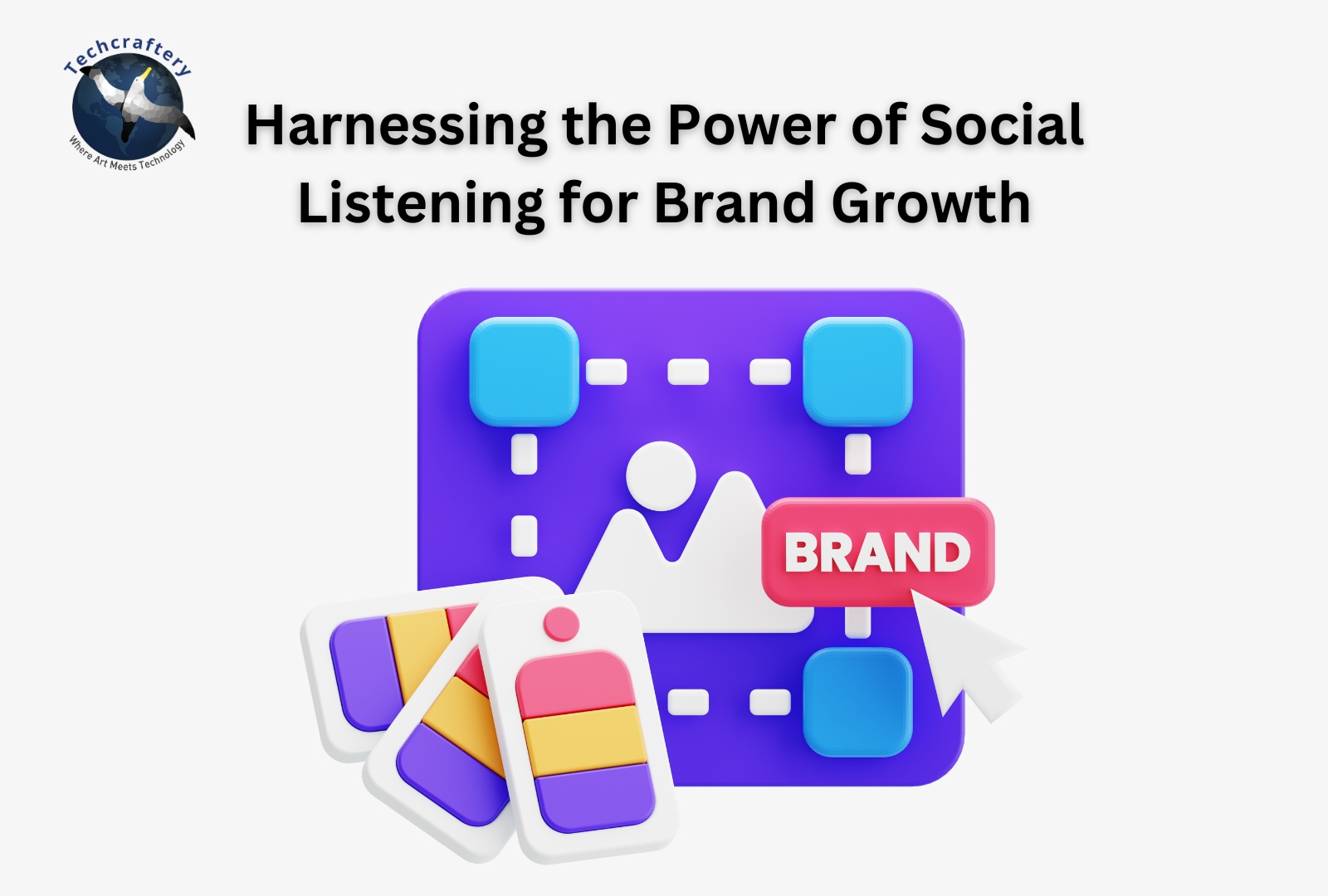In the digital age, social media has revolutionized the way businesses engage with customers. With billions of active users across various platforms like Twitter, Facebook, Instagram, and TikTok, the opportunities for brands to understand consumer behavior are endless. However, with so much content being shared every second, it can be challenging to filter through the noise to get the insights that truly matter.
This is where social listening comes into play.
Social listening refers to the process of monitoring online conversations about your brand, products, competitors, or industry, and using that data to make informed business decisions. By carefully listening to what people are saying on social platforms, businesses can uncover insights that lead to improved customer engagement, brand reputation, and growth.
In this article, we’ll explore the concept of social listening, its importance for brand growth, how to implement it effectively, and the tools that can help you harness its full potential.
What is Social Listening?
Social listening goes beyond simply monitoring social media. It involves actively tracking online conversations to understand consumer sentiments, identify trends, and respond to feedback. Social listening tools track mentions of your brand, competitors, industry keywords, or even specific topics in real-time across social media platforms, blogs, news articles, and forums.
In short, social listening is about understanding the “pulse” of your audience and using that information to influence your marketing, product development, customer service, and overall business strategy.
The Difference Between Social Listening and Social Monitoring
It’s essential to differentiate between social listening and social monitoring, as they are often confused. While both are crucial to understanding your brand’s online presence, they serve different purposes:
- Social Monitoring: This is about tracking specific keywords, hashtags, mentions, and discussions. It involves simply observing or “monitoring” what is being said in real-time. Social monitoring tools alert you to direct mentions of your brand or specific topics but don’t always provide deeper context or sentiment.
- Social Listening: Social listening goes one step further. It involves analyzing the data to understand the broader conversation, identifying patterns, and deriving actionable insights. This approach helps brands gain a more comprehensive understanding of public opinion, emerging trends, and opportunities for engagement.
Why is Social Listening Important for Brand Growth?
In today’s competitive business environment, every brand is looking for ways to grow, improve customer experience, and stay ahead of competitors. Social listening can serve as a strategic tool for all of these objectives and more. Here are several reasons why social listening is crucial for brand growth:
1. Understanding Customer Sentiment
Social listening enables you to understand how people feel about your brand, products, and services. By analyzing sentiments (positive, negative, or neutral) in online conversations, you can gain valuable insights into customer perceptions. This allows you to make adjustments to your brand strategy, improve products, and create more effective marketing campaigns.
For example, if customers express dissatisfaction with a particular product feature or service, you can quickly address it before it escalates into a PR crisis.
2. Tracking Competitor Performance
By listening to conversations about your competitors, you can gain a competitive edge. You can see what people are saying about their products, what they like, and what they dislike. This helps you identify gaps in the market that you can capitalize on and figure out how to differentiate your brand.
In addition, social listening can alert you to potential weaknesses in your competitors’ offerings, which you can leverage to your advantage in your own marketing and branding strategies.
3. Identifying Emerging Trends
Social listening is an excellent tool for identifying new trends early on. Whether it’s a shift in consumer behavior, a change in market demands, or the rise of a new hashtag or challenge, being able to spot trends quickly allows you to stay ahead of the curve. By acting on these trends, your brand can capitalize on timely opportunities and position itself as an industry leader.
4. Enhancing Customer Support and Engagement
Social listening enables brands to monitor customer complaints, questions, and feedback across different platforms. By responding promptly to concerns, offering solutions, or simply acknowledging positive feedback, brands can build stronger relationships with their customers.
Proactively addressing issues or engaging with users helps to demonstrate that you care about their experiences, and it can also help to resolve issues before they escalate into bigger problems.
5. Improving Content Strategy
Social listening helps you understand what your target audience cares about. By analyzing what people are discussing in relation to your industry or brand, you can refine your content strategy. You’ll know what topics to focus on, what questions your audience is asking, and what type of content resonates most with them.
Instead of guessing what might work, you can create content that is informed by data, ensuring that it aligns with the interests and needs of your audience.
6. Crisis Management
One of the most significant advantages of social listening is early detection of potential PR crises. Monitoring conversations about your brand allows you to spot negative sentiment or emerging issues before they escalate. For instance, if there’s a viral complaint or an issue with your product, social listening can alert you to it immediately.
Being proactive about addressing negative feedback and communicating your response can help you manage and mitigate the damage to your brand’s reputation.
How to Implement Social Listening for Brand Growth
Now that we understand the importance of social listening, let’s explore how to effectively implement it for brand growth. There are several steps involved in using social listening to its fullest potential:
1. Set Clear Goals
Before diving into social listening, it’s essential to define what you want to achieve. Do you want to track brand mentions? Monitor customer sentiment? Understand industry trends? Setting clear objectives will help you focus your social listening efforts and ensure that you’re collecting the right data.
For example, if your goal is to improve customer service, you might focus on tracking customer complaints and feedback about your products or services. If your goal is to improve brand awareness, you could monitor mentions of your brand and track the impact of your marketing campaigns.
2. Identify Relevant Keywords and Topics
Once your goals are set, the next step is identifying the keywords, hashtags, and topics that you want to track. These could include:
- Your brand name, products, and services
- Competitors’ names
- Industry-specific terms and trends
- Key influencers and thought leaders in your industry
- Popular hashtags
It’s essential to choose keywords that are relevant to your brand and business objectives. Also, be sure to include variations of keywords and common misspellings to capture all possible mentions.
3. Choose the Right Social Listening Tools
While manual monitoring is possible, it’s not practical for tracking conversations across multiple platforms in real-time. Using social listening tools will save you time and help you gather more comprehensive data. Some popular social listening tools include:
- Hootsuite: Offers keyword monitoring, sentiment analysis, and competitor tracking across various social networks.
- Brandwatch: Provides in-depth analysis and reporting, including sentiment analysis, topic modeling, and influencer identification.
- Sprout Social: Allows you to monitor mentions, track hashtags, and measure engagement and sentiment on multiple platforms.
- BuzzSumo: Useful for tracking trending topics and identifying content that is resonating with your audience.
- Mention: Tracks brand mentions, competitors, and industry keywords in real time.
These tools provide you with dashboards that allow you to visualize social data and make sense of large volumes of information quickly.
4. Monitor Conversations Regularly
Social listening is not a one-time activity; it’s an ongoing process. To stay updated on emerging trends, customer feedback, and competitive activity, it’s essential to monitor social conversations regularly. Set up alerts or automatic reports to stay on top of mentions and track changes over time.
Depending on your brand’s goals, you may want to monitor conversations on a daily, weekly, or monthly basis.
5. Analyze and Interpret Data
Gathering data is just the first step; the next is analyzing it. You need to sift through the information to extract valuable insights. Look for patterns in consumer sentiment, common pain points, industry shifts, or emerging trends. Tools like sentiment analysis, which evaluates the emotional tone of conversations, can help you identify whether people feel positively or negatively about your brand.
Use these insights to inform decisions about your product development, content strategy, customer service, and marketing campaigns.
6. Act on Insights
The final step in social listening is taking action. Whether it’s responding to customer complaints, creating content around a trending topic, or adjusting your marketing campaigns based on feedback, it’s crucial to use the insights you’ve gathered to improve your brand’s performance.
Social listening shouldn’t just be a tool for gathering data; it should be an integral part of your overall strategy for improving customer engagement, driving innovation, and achieving brand growth.





